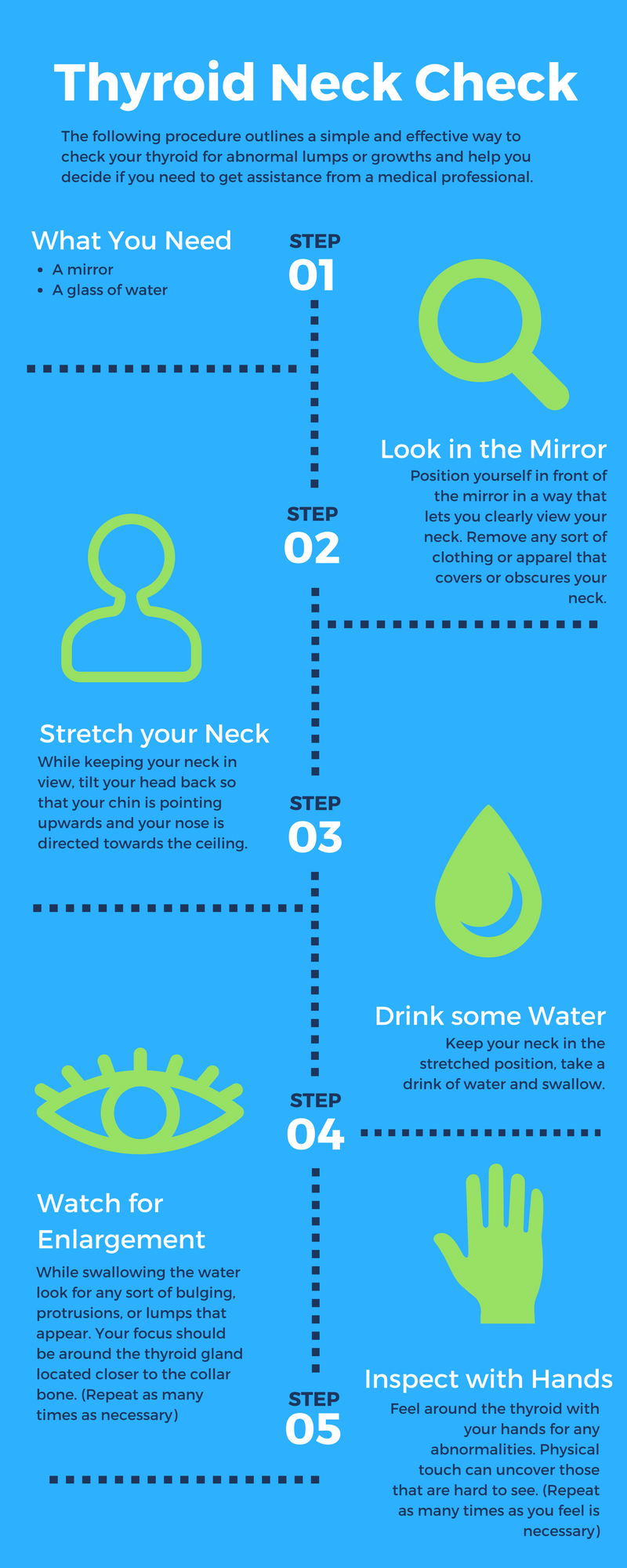5 Things You Should Know About Thyroid Cancer
The diagnosis of cancer is frightening. It doesn’t matter the type or the statistics given by the doctor — the word itself invokes a feeling of uneasiness within us. But that uneasiness should not stop us from knowing the warning signs.
In recognition of Thyroid Cancer Awareness Month, and for all of those who have fought and are currently fighting the battle, we’d like to share some things you should know about thyroid cancer (and squash some misconceptions).
1. Thyroid cancer is becoming more common.
Of all cancers, thyroid cancer is said to have the fastest-growing rate of incidence in the United States. Since 1990, the chance of being diagnosed with thyroid cancer has more than doubled. The American Cancer Society has estimated that there will be nearly 57,000 new instances of thyroid cancer diagnosed this year. It is expected most of this group will be composed of women because nearly 75% of thyroid cancer cases are found among females.
Part of the increased prevalence of the condition may be attributed to greater detection such as thyroid ultrasound, which is capable of identifying smaller thyroid nodules. Others hypothesize the greater occurrence is due to increased exposure to toxins and chemicals, more cases of autoimmune disease and greater exposure to radiation.
No matter the cause, it is important to be aware of this greater occurrence and keep yourself informed.
2. Thyroid cancer may not present symptoms.
You are probably aware of the common signs of thyroid cancer, including swelling and pain in the neck, hoarseness or loss of voice, and growths or tumors located in and around the neck. This is all pertinent knowledge, but recognizing symptoms may not prove to be the best method of identifying thyroid cancer.
Some forms of thyroid cancer may be asymptomatic or completely without symptoms. This means even if you do not present symptoms of thyroid cancer, there is a possibility it has developed. Because of this, it is critical you take advantage of and follow through with regularly scheduled doctor’s visits.
During these clinical visits, a physical thyroid examination done by your doctor may uncover an abnormal growth or thyroid nodule. Even then, some forms of thyroid cancer may only be identified through x-rays and image testing of the neck.
Therefore, it is of utmost importance you be vigilant and aware of your current thyroid health.
3. How you can recognize a cancerous lump.
Even though some forms of thyroid cancer are hard to identify, most thyroid nodules, lumps and goiters can be identified through a simple self-examination. Identifying an abnormal growth through this easy and repeatable neck check can be the difference in detecting and treating thyroid cancer or not.
Although most goiters and other thyroid-related growths are most frequently discovered during a clinical examination with your doctor, this simple self-check can help you recognize thyroid abnormalities and take appropriate action.

To conduct this thyroid check all you need is a mirror and some water.
First, position yourself in front of the mirror in such a way you can easily see your neck.
Next, tilt your head back and swallow a small amount of water. Visually examine the throat while swallowing to see if any lumps are present.
You can further examine your neck by using one of your hands to feel for lumps while swallowing. This simple exam can occasionally catch a growth, prompting you to seek proper testing and medical assistance.
4. If you are a thyroid cancer patient, you are at risk of developing other cancers.
Unfortunately, the majority of thyroid cancer patients are not aware that they have an increased risk of developing secondary forms of cancer. Although thyroid cancer has a high rate of survivability, with nearly 95% of all cases not ending in mortality, it is important for thyroid cancer survivors to remain vigilant during and after treatment.
After the first year of treatment thyroid cancer, patients are at their highest risk of developing other less-survivable cancers including: non-melanoma skin cancer, prostate cancer, kidney cancer, adrenal gland cancer and non-Hodgkin’s lymphoma.
Those with thyroid cancer have a greater survival rate than others diagnosed with more aggressive cancers, but their risk of developing more unforgiving conditions increases significantly.
5. You may not need surgery.
A common response to inconclusive or indeterminate results of a thyroid nodule biopsy is to remove the thyroid surgically. This process is called a thyroidectomy and involves the complete removal of the thyroid. If your thyroid has been conclusively diagnosed as cancerous, then a thyroidectomy is certainly the right choice.
However, most thyroid nodules are benign, and if a doctor has concerns or suspicions of a thyroid nodule, they may still recommend a thyroidectomy. Unfortunately, if your doctor incorrectly diagnoses a thyroid nodule as being cancerous, this irreversible procedure results in you being hypothyroid for the rest of your life.
Recent research and procedures have become available that allow for greater accuracy regarding thyroid nodule biopsies and analysis. Before hastily moving forward with a thyroidectomy, it is best to consider other testing and analysis methods.
Spread the message.
With greater knowledge of thyroid cancer comes better treatment, awareness and wellness. You can do your part this September and celebrate Thyroid Cancer Awareness Month by sharing what you have learned and informing others of the various need to know aspects of thyroid cancer.
The National Academy of Hypothyroidism is a non-profit, multidisciplinary medical society dedicated to the dissemination of new information on the diagnosis and treatment of hypothyroidism.
We want to hear your story. Become a Mighty contributor here.
Thinkstock photo by Tonkovic

